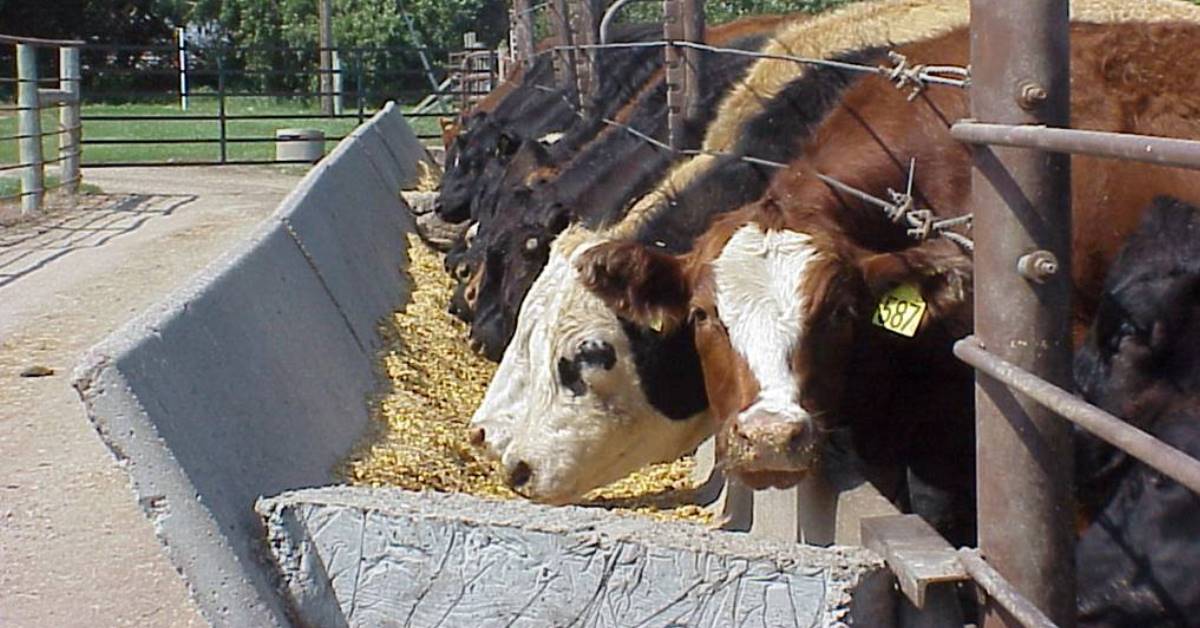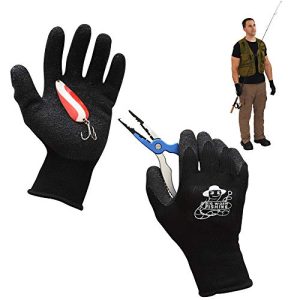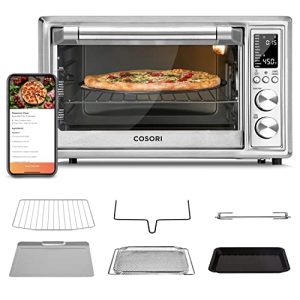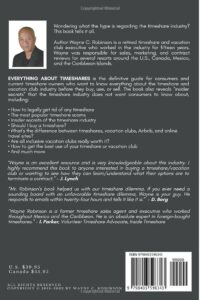Contents
- Benefits Of Cattle Bunk Feeders
- Types Of Cattle Bunk Feeders
- Factors To Consider When Choosing A Cattle Bunk Feeder
- Proper Installation And Maintenance Of Cattle Bunk Feeders
- Case Studies: Success Stories Of Cattle Bunk Feeder Implementation
- Innovations In Cattle Bunk Feeders
- Best Practices For Using Cattle Bunk Feeders
- Future Trends And Developments In Cattle Bunk Feeders
- Frequently Asked Questions For Cattle Bunk Feeders
- Conclusion
Cattle bunk feeders are essential tools that provide a convenient, efficient, and organized way to feed cattle. They help prevent feed spoilage, reduce feed waste, and improve overall feed efficiency.
With their sturdy construction and durable materials, cattle bunk feeders are designed to withstand heavy use and can be easily moved to different feeding locations. These feeders come in various sizes and designs, allowing farmers to choose the one that best suits their needs.
By utilizing cattle bunk feeders, farmers can ensure that their livestock receives an adequate and well-balanced diet, leading to healthier and more productive cattle.
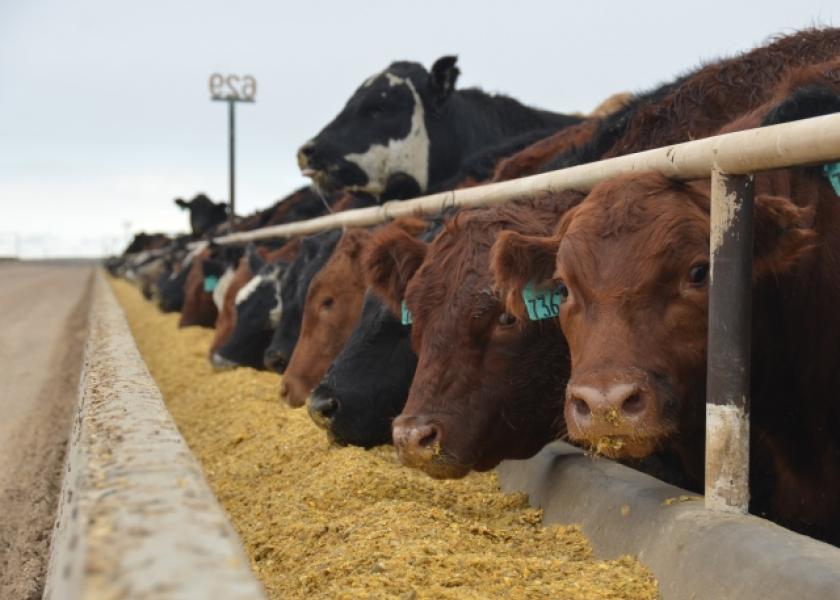
Credit: www.drovers.com
Benefits Of Cattle Bunk Feeders
Cattle bunk feeders offer numerous benefits by providing efficient and organized feeding for cattle, minimizing feed waste, reducing labor and feed costs, and promoting better herd health. These feeders help optimize cattle performance and facilitate easier management of feeding operations.
Cattle Bunk Feeders: Boosting Efficiency And Livestock Health
Cattle bunk feeders are an essential tool for farmers and ranchers looking to optimize their operations. These sturdy structures offer numerous benefits that can positively impact efficiency, productivity, animal health, and overall cost savings. In this section, we’ll delve into the advantages of incorporating cattle bunk feeders into your livestock management system.
Increased Efficiency And Productivity:
- Reduced Feed Waste: Cattle bunk feeders allow for precise ration control, minimizing feed waste and preventing overconsumption. Animals have access to an optimal amount of feed, ensuring that each bite contributes to their nutritional needs.
- Time Management: With cattle bunk feeders, the time required for feeding is significantly reduced. Instead of spreading feed across the pasture, you can conveniently fill the feeders in one go, providing your cattle with constant access to nourishment.
- Improved Gain: Controlling the feed portions and the frequency of feeding helps maintain consistent nutrition levels. This can lead to enhanced weight gain and better overall herd performance.
Improved Health And Nutrition:
- Individual Intake Monitoring: Cattle bunk feeders allow you to closely monitor the feed intake of each animal. This ensures that all livestock receive an appropriate portion, preventing underfeeding or overfeeding, and promoting healthier animals.
- Reduced Contamination Risk: By lifting feed off the ground, cattle bunk feeders help minimize the risk of feed contamination from mud, feces, or pests. Animals can enjoy clean and uncontaminated feed, resulting in better overall health.
- Decreased Feed Spoilage: Placing feed in bunk feeders protects it from exposure to moisture and weather elements, reducing spoilage and ensuring consistent nutritional quality.
Cost Savings:
- Economical Feed Utilization: With cattle bunk feeders, you can better manage feed consumption and reduce wastage. This allows you to make the most of your feed supply, leading to significant cost savings over time.
- Health Maintenance: By promoting healthier animals, bunk feeders can help reduce veterinary expenses, medications, and treatments associated with poor nutrition or feedborne illnesses.
- Long-term Investment: Although the initial cost of investing in cattle bunk feeders may seem significant, the long-term benefits and cost savings they provide make them a worthwhile investment for livestock producers.
By integrating cattle bunk feeders into your livestock management practices, you can enhance efficiency and productivity, improve animal health and nutrition, and achieve substantial cost savings in the long run. These versatile tools offer a win-win situation for both farmers and their herds, ensuring optimal performance and well-being.
Upgrade your operations today and reap the rewards of cattle bunk feeders.
Types Of Cattle Bunk Feeders
Cattle bunk feeders come in various types, including T-shaped, V-shaped, and J-shaped designs, each offering benefits for efficient feeding. These feeders help prevent feed waste and promote easier access for the cattle.
Cattle bunk feeders are a crucial component of livestock management, ensuring that cows receive their daily feed in an organized and efficient manner. These feeders come in various types, each designed to suit different feeding requirements. In this section, we will explore three common types of cattle bunk feeders: portable feeders, stationary feeders, and fence line feeders.
Portable Feeders:
- Ideal for ranches with rotational grazing practices or limited feeding areas.
- Easy to transport and set up, providing flexibility for feeding at different locations.
- Available in different sizes, accommodating varying herd sizes and feed quantities.
- Often designed with wheels for convenient movement and durability.
- Can be made from sturdy materials such as steel or wood.
Stationary Feeders:
- Suitable for ranches with a fixed feeding area.
- Designed to be durable and withstand daily use.
- Available in different sizes and configurations to accommodate various herd sizes and feeding requirements.
- Can be made from materials like galvanized steel or heavy-duty plastic.
- Some stationary feeders feature adjustable baffles or dividers for controlling the feed flow and preventing overconsumption.
Fence Line Feeders:
- Installed along the fence line for easy access and feeding.
- Promote efficient use of space and minimize feed wastage.
- Often designed with multiple feeding slots to accommodate several animals simultaneously.
- Can be mounted on posts or fence panels, allowing for easy installation and relocation.
- Designed to withstand outdoor conditions and harsh weather.
Cattle bunk feeders play a vital role in ensuring that cattle receive their daily feed in an organized and controlled manner. Whether you opt for portable feeders for flexibility, stationary feeders for fixed feeding areas, or fence line feeders for efficient use of space, selecting the right type of feeder is crucial for the well-being and productivity of your cattle.
Factors To Consider When Choosing A Cattle Bunk Feeder
Choosing the right cattle bunk feeder involves considering factors like size, durability, material quality, ease of cleaning, and cost-effectiveness. Opting for a well-designed and suitable feeder ensures efficient feeding practices and promotes the well-being of the cattle.
Are you looking for the perfect cattle bunk feeder for your farm? Choosing the right one is crucial to ensure the well-being and productivity of your cattle. With numerous options available, it’s important to consider certain factors before making a decision.
Let’s explore three key factors to consider when selecting a cattle bunk feeder: Size and Capacity, Durability and Construction, and Feeding System Design.
Size And Capacity
- Consider the number of cattle you have on your farm and their feeding requirements.
- Choose a cattle bunk feeder that has sufficient size and capacity to accommodate the number of animals you intend to feed.
- Ensure there is enough space for each animal to comfortably access the bunk feeder.
- The feeder should be large enough to hold an adequate amount of feed to prevent frequent refilling.
Durability And Construction
- Opt for a cattle bunk feeder made of high-quality materials that can withstand the outdoor elements and heavy usage.
- Look for feeders with solid construction and strong welds to ensure durability.
- Check if the feeder has a protective coating or finish to prevent rust and corrosion.
- Consider feeders with reinforced corners or anti-waste features to minimize feed wastage and extend the lifespan of the feeder.
Feeding System Design
- Assess the design and functionality of the feeding system. It should support easy access and optimal feed distribution.
- Look for features such as adjustable feed openings or gates to allow for controlled feed intake.
- Consider feeders with rain shields or covers to protect the feed from weather elements.
- Evaluate the ease of cleaning and maintenance of the feeder. A well-designed feeding system will facilitate efficient cleaning and save you time and effort.
Selecting the right cattle bunk feeder is vital for maintaining the health and productivity of your herd. Keep in mind the size and capacity, durability and construction, and feeding system design when making your decision. By considering these factors, you can ensure that you provide your cattle with a sturdy, convenient, and well-designed feeder that meets their feeding requirements.
Take the time to research and choose wisely, as a quality cattle bunk feeder can contribute to the success of your farming operations.
Proper Installation And Maintenance Of Cattle Bunk Feeders
Proper installation and maintenance are crucial for optimizing the functionality of cattle bunk feeders. By ensuring correct setup and regular care, farmers can improve feed distribution and prevent wastage, promoting more efficient feeding practices for their cattle.
Cattle bunk feeders play a crucial role in providing a consistent and efficient feeding system for livestock. To ensure their effectiveness and longevity, it is essential to follow proper installation and maintenance practices. By doing so, you can optimize the functionality of these feeders and keep your cattle well-nourished.
In this section, we will discuss three key aspects of cattle bunk feeder management: site preparation, cleaning and sanitation, and inspection and repair. Let’s explore each of these areas in detail:
Site Preparation
Preparing the feeding area for your cattle bunk feeders is essential to ensure proper functionality and accessibility. Here are some key considerations for site preparation:
- Select an appropriate location: Choose a flat and well-drained area with ample space for cattle to access the feeders without crowding. This will help prevent accidents and ensure a smooth feeding process.
- Evaluate the terrain: Ensure that the site is free from rocks, debris, or any other obstructions that may hinder the installation or maintenance of the feeders. Level the area if needed to create a stable foundation for the feeders.
- Adequate spacing: Allow sufficient spacing between bunk feeders to prevent overcrowding and competition among the cattle. This will also facilitate easier maintenance and cleaning.
Cleaning And Sanitation
Regular cleaning and sanitation are vital for maintaining a healthy and safe feeding environment for your cattle. Here are some important steps to follow:
- Remove feed residue: After each feeding, remove any leftover feed from the bunk to prevent mold and bacterial growth. Use a rake or broom to sweep away excess feed.
- Scrub the bunk feeders: Periodically, scrub the bunk feeders with a mild detergent or disinfectant solution to remove dirt, grime, and potential pathogens. Rinse thoroughly to ensure no residue remains.
- Proper drainage: Ensure that the bunk feeders have proper drainage to prevent the accumulation of water or moisture, which can lead to spoilage and unsanitary conditions.
Inspection And Repair
Regular inspection and timely repair of cattle bunk feeders are crucial to maintain their structural integrity and functionality. Here are some key steps to follow:
- Check for structural damage: Regularly inspect the feeders for any signs of structural damage, such as rust, cracks, or loose parts. Address any issues promptly to prevent further deterioration.
- Secure fastenings: Tighten any loose bolts or fastenings to maintain the stability of the feeders. This will prevent accidents and ensure the safety of your cattle during feeding.
- Assess wear and tear: Monitor the condition of the bunk feeders over time, paying attention to areas that may experience significant wear, such as edges and corners. Replace worn-out components to ensure optimal functionality.
Proper installation and maintenance of cattle bunk feeders are essential for the well-being and efficient feeding of your livestock. By following these guidelines for site preparation, cleaning and sanitation, and inspection and repair, you can ensure the longevity and effectiveness of your feeders.
Stay on top of these practices to create a safe, hygienic, and productive feeding environment for your cattle.
Case Studies: Success Stories Of Cattle Bunk Feeder Implementation
Discover the remarkable success stories of implementing cattle bunk feeders through case studies. Understand the real-life benefits of using these feeders for your cattle management needs.
When it comes to cattle bunk feeders, many farmers have seen significant improvements in various aspects of their operations, from increased feed efficiency and weight gain to reduced feed waste and spillage. Implementing cattle bunk feeders has also led to improved animal health and well-being, benefiting both the cattle and the farmers.
Increased Feed Efficiency And Weight Gain:
- Cattle bunk feeders have proven to be highly effective in increasing feed efficiency and promoting better weight gain in cattle.
- The design of the feeders allows for a more controlled and precise feeding process, ensuring that each animal receives the right amount of feed.
- With the ability to regulate the amount of feed distributed, farmers have observed a reduction in feed waste and over-consumption, leading to healthier and more efficient growth.
- The optimized feeding process facilitated by cattle bunk feeders has resulted in improved feed conversion rates, ultimately translating into higher profits for farmers.
Reduced Feed Waste And Spillage:
- One of the primary advantages of implementing cattle bunk feeders is the significant reduction in feed waste and spillage.
- The design of the feeders minimizes the chances of feed being trampled, soiled, or blown away by wind, preventing unnecessary losses.
- Feed waste is a common concern for farmers, as it not only affects their bottom line but also attracts pests and creates unsanitary conditions. Cattle bunk feeders effectively address this issue, ensuring that the feed remains protected and easily accessible for the cattle.
- By preventing feed waste and spillage, farmers can make the most out of their resources, optimizing feed usage and reducing unnecessary expenses.
Improved Animal Health And Well-Being:
- The implementation of cattle bunk feeders has had a positive impact on the health and well-being of the animals.
- With improved control over the feeding process, farmers can better monitor the quality and quantity of feed consumed by each animal.
- This increased control helps prevent issues such as overeating or underfeeding, reducing the risk of digestive disorders and nutritional imbalances.
- Additionally, the easy access to feed provided by the bunk feeders ensures that all animals have equal opportunities to eat, preventing dominant animals from monopolizing the feed.
- Improved animal health translates to a better overall performance of the herd, including increased productivity and reduced veterinary costs.
Cattle bunk feeders have proven to be a game-changer for farmers, offering numerous benefits such as increased feed efficiency and weight gain, reduced feed waste and spillage, and improved animal health and well-being. Implementing these feeders allows farmers to optimize their operations, minimize losses, and provide better care for their cattle.
Innovations In Cattle Bunk Feeders
Discover the latest innovations in cattle bunk feeders for optimized feeding efficiency and improved herd productivity. These advancements in cattle feeding technology ensure precise ration delivery and minimize feed waste, leading to healthier and more cost-effective cattle management.
Cattle bunk feeders have come a long way in recent years, with several innovative advancements revolutionizing the way farmers feed their herds. These developments have made feeding cattle more efficient, convenient, and tailored to meet the specific needs of each animal.
In this blog post, we will explore three exciting innovations in cattle bunk feeders: Automatic Feed Delivery Systems, Monitoring and Tracking Technologies, and Customizable Feeding Programs.
Automatic Feed Delivery Systems:
- Increased efficiency: Automatic feed delivery systems use advanced technology to deliver the right amount of feed to each animal, eliminating the need for manual feeding. This saves time and labor for farmers, allowing them to focus on other important tasks.
- Precise portion control: These systems ensure that each animal receives the appropriate amount of feed, reducing waste and promoting optimal nutrition. By accurately measuring and delivering rations, automatic feed delivery systems help maintain consistent weight and overall health in cattle.
- Enhanced feeding schedules: With the ability to program specific feeding times, these systems ensure that feed is available to the cattle when they need it most. This helps to maintain a regular feeding routine and promotes healthy digestion.
Monitoring And Tracking Technologies:
- Real-time data: Monitoring and tracking technologies provide farmers with valuable insights into the eating habits and overall behavior of their cattle. By monitoring feed consumption, water intake, and activity levels, farmers can identify any potential health issues or deviations from normal patterns.
- Early detection of health concerns: These technologies enable farmers to detect health issues early on, allowing for prompt intervention and treatment. By monitoring weight gain or loss, temperature, and other vital signs, farmers can address health concerns before they escalate.
- Improved herd management: Monitoring and tracking technologies allow farmers to track individual animal performance and identify any underperforming or overperforming individuals. This data can help farmers make informed decisions regarding breeding, culling, or nutrition adjustments for better overall herd management.
Customizable Feeding Programs:
- Tailored nutrition: Customizable feeding programs consider the specific nutritional requirements of each animal. By taking into account factors such as age, weight, activity level, and reproductive status, farmers can create feeding programs that meet the unique needs of their cattle.
- Optimized growth and productivity: Customizable feeding programs aim to maximize growth and productivity in cattle by providing the appropriate balance of nutrients at each stage of development. These programs take into consideration the changing nutritional needs of growing calves and lactating cows.
- Cost-effective feeding: By tailoring feeding programs to individual cattle, farmers can optimize feed efficiency and minimize waste. This can lead to cost savings in feed expenses while ensuring that the nutritional needs of the cattle are met.
Innovations in cattle bunk feeders, such as automatic feed delivery systems, monitoring and tracking technologies, and customizable feeding programs, have greatly improved the efficiency and effectiveness of cattle feeding. These advancements enable farmers to provide optimal nutrition, track individual animal performance, and streamline their herd management practices.
With these innovations, the future of cattle feeding looks promising for both farmers and their herds.
Best Practices For Using Cattle Bunk Feeders
Cattle bunk feeders are essential for efficient feeding management. Learn the best practices for proper usage to optimize feed intake and minimize wastage, leading to improved herd health and increased productivity.
Proper Feed Management:
- Consistency is key when it comes to feeding cattle using bunk feeders. Create a feeding schedule and stick to it to avoid disruptions to their feeding routine.
- Ensure that the bunk feeders are clean and free from any spoiled or moldy feed. Regularly inspect the feed to maintain its quality.
- Adequate space should be provided for each animal to access the bunk feeders comfortably. This will prevent overcrowding and minimize competition during feeding.
Monitoring and Adjusting Feed Rations:
- Regularly monitor the feed consumption of your cattle to ensure that they are receiving the right amount of nutrition. Keep track of any changes in appetite or body condition.
- It is essential to adjust the feed rations according to the specific needs of the cattle. Factors such as age, weight, and breed should be taken into consideration.
- Consult with a nutritionist or veterinarian to determine the appropriate feed formulation and make necessary adjustments based on the cattle’s requirements.
Regular Equipment Maintenance:
- Routine maintenance of cattle bunk feeders is crucial to ensure their effectiveness and longevity. Regularly inspect the feeders for any signs of damage or wear.
- Clean the feeders regularly to prevent the buildup of debris and feed residue. This will help maintain the hygiene and quality of the feed.
- Lubricate moving parts and check for loose bolts or components. Repair or replace any damaged parts promptly to prevent accidents or injuries to the animals.
Remember, following these best practices for using cattle bunk feeders will help ensure optimal feed management, accurate feed rations, and proper equipment maintenance. Taking care of your cattle’s feeding needs will contribute to their overall health and productivity.
Future Trends And Developments In Cattle Bunk Feeders
Cattle bunk feeders are undergoing future improvements to enhance feeding efficiency and reduce waste. Innovations include automated systems, improved feed quality, and advanced monitoring technologies for optimum cattle nutrition and management.
Cattle Bunk Feeders are an essential component of modern livestock farming, providing a convenient and efficient way to feed cattle in a controlled manner. As technology continues to advance, future trends and developments in cattle bunk feeders are expected to revolutionize the industry.
In this blog post, we will explore three key areas that hold great potential for the future of cattle bunk feeding: Integration with Precision Livestock Farming, Sustainable and Eco-friendly Designs, and Enhanced Data Analytics for Performance Optimization.
Integration With Precision Livestock Farming:
- Cattle bunk feeders are being increasingly integrated with precision livestock farming techniques, allowing for detailed monitoring of individual animal feed intake and behavior.
- This integration enables farmers to make data-driven decisions on feed mixtures, ration adjustments, and overall herd management.
- By leveraging technology, cattle bunk feeders can be connected to cloud-based platforms, giving farmers remote access to real-time data and analytics.
Sustainable And Eco-Friendly Designs:
- The future of cattle bunk feeders lies in the development of sustainable and eco-friendly designs that minimize waste and environmental impact.
- Innovative feed dispensing mechanisms, such as timed release systems, can be incorporated, ensuring that cattle consume their allocated feed without leaving excess behind.
- Eco-friendly materials, like recycled plastics or bio-based composites, are being explored to reduce the carbon footprint of cattle bunk feeders while maintaining durability and functionality.
Enhanced Data Analytics For Performance Optimization:
- The integration of advanced data analytics into cattle bunk feeders offers exciting opportunities for performance optimization and herd management.
- By collecting and analyzing data on feed consumption, weight gain, and animal behavior, farmers can identify patterns and make informed decisions to improve overall productivity.
- Predictive analytics algorithms can be utilized to forecast feed requirements, optimize feed formulations, and identify potential health issues early on.
The future of cattle bunk feeders holds significant promise in terms of integration with precision livestock farming, sustainable and eco-friendly designs, and enhanced data analytics. These developments are poised to revolutionize livestock farming practices, allowing for more efficient and sustainable cattle feeding while empowering farmers with valuable insights to optimize herd management and overall productivity.
Frequently Asked Questions For Cattle Bunk Feeders
What Are Cattle Bunk Feeders?
Cattle bunk feeders are specially designed structures that provide a feeding area for cattle. They are built to withstand the weight and pressure of the animals, and they help to minimize waste by keeping the feed off the ground. These feeders play an important role in providing a consistent and balanced diet for cattle.
Why Are Cattle Bunk Feeders Important?
Cattle bunk feeders are important for several reasons. Firstly, they help to minimize feed waste by keeping the feed off the ground, which can be especially significant in large-scale farming operations. Secondly, they promote proper feeding behavior by providing a designated area for the cattle to consume their feed.
Lastly, they contribute to the overall health and well-being of the cattle by ensuring they have access to a consistent and balanced diet.
How Are Cattle Bunk Feeders Constructed?
Cattle bunk feeders are typically constructed using durable materials such as steel or concrete. They are designed with a sloping bottom to ensure that any feed not consumed by the cattle can easily be collected and redistributed. Some feeders also incorporate barriers or dividers to prevent animals from fighting or pushing each other while eating.
Overall, the construction of these feeders prioritizes durability, functionality, and easy maintenance.
What Are The Benefits Of Using Cattle Bunk Feeders?
Using cattle bunk feeders offers several benefits. Firstly, they help to minimize feed waste, reducing costs and ensuring that the animals receive their proper nutrition. Secondly, they promote more efficient feeding behavior by providing a designated area for the cattle to eat.
Finally, they contribute to a cleaner and more organized feeding environment, which can have a positive impact on the overall health and well-being of the animals.
Conclusion
Cattle bunk feeders are vital for efficient and cost-effective feeding practices in livestock operations. By providing a controlled and accessible feeding environment, these feeders minimize feed waste and promote better feed intake among cattle. The use of bunk feeders also contributes to the overall health and well-being of the animals, reducing the risk of injury and disease associated with alternative feeding methods.
With various designs and options available in the market, farmers can select the most suitable bunk feeders based on their specific requirements. Investing in high-quality bunk feeders not only improves feeding management but also enhances productivity and profitability in the long run.
As cattle welfare and efficient agricultural practices continue to gain importance, the use of cattle bunk feeders stands as a testament to the industry’s commitment to optimizing feed utilization and ensuring the well-being of the animals. Improve your feeding operations with cattle bunk feeders and experience the benefits firsthand.

